Table of Contents
Welcome to the August 2024 Global Landcare Newsletter
21 Countries, 171 projects, AUD $481,432
Thanks to your incredible efforts and donations our Global Landcare Program continues to grow! We look forward to another year of making a difference!
In this newsletter, we are featuring stories from some of our Board members. GL is a global organisation and, for many of us, it is wonderful to hear and learn from colleagues living in very different circumstances from our own.
We hope you enjoy this newsletter!
Andrea Mason, Chair
![]()
Celebrating Dr Nick Edgar’s Appointment as Vice Chair of the Global Landcare Board
We were delighted to announce the appointment of Nick Edgar as the Vice Chair of the Global Landcare Board last year.
Nick’s unwavering commitment to preserving and enhancing the health of New Zealand’s waterways, honed through his tenure as NZ Landcare Trust’s CEO for 16 years, seamlessly extends to his position as Vice Chair of Global Landcare (he continues to serve in both capacities.
“Embarking on this new role as Vice Chair of Global Landcare is a tremendous honour and opportunity to further advance the principles and practices of community-driven sustainable land and water management.”
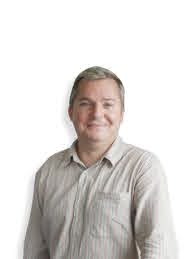
In his new capacity, Nick is set to extend a catchment leader training programme, utilising NZLT’s ACE Programme as a blueprint, to regionalise activities and training programs in Fiji and Samoa. These efforts aim to educate community farmer leaders in catchment management, with work on this groundbreaking programme slated to commence in 2025.
Exceptional interest in New Zealand’s catchment education capability programme
NZ Landcare Trust-Nga Matapopore Whenua is thrilled by the overwhelming response to the launch of the Aotearoa Catchment Extension (ACE) programme, with registrations far surpassing capacity, highlighting the demand for a capacity-building program for catchment group leaders, coordinators, iwi, hapu, and others involved.
The ACE programme has three main pillars that include an online learning platform, in-person knowledge hubs, and then regional communities of practice. Learning is based on six modules – Freshwater Management in Aotearoa (New Zealand); Strategic Leadership; Integrated Farm to Catchment Scale Planning; GMP and Mitigation Tools and Technologies; Monitoring and Evaluation; and Engagement and Storytelling.
NZ Landcare Trust National Capability Development Manager Hannah Blake, who is managing the ACE programme, says the experts who have helped create the content and who will be presenting at the knowledge hubs are nationally renowned.
“We’ve collaborated with exceptional experts to curate our online content and have secured some of them to present at our two-day, in-person knowledge hubs nationwide. We’re ecstatic about this programme. Paired with our national catchment resource database on our website, this offers an exceptional learning opportunity and resource for catchment group members nationwide.” For more information on the ACE programme or to check out the national database of catchment resources, head to https://www.catchmenttoolkit.co.nz
See also reference or social media links (website, Facebook):
https://www.facebook.com/nzlandcaretrust/
https://www.catchmenttoolkit.co.nz/
United Nations Climate Change Conference (COP 28) in Dubai, UAE, 30 November to 12 December, 2023.
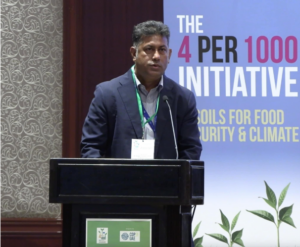
We are very fortunate to have Dr. Shaikh Tanveer Hossain as a GL Board member. He attended this conference sponsored by Global Alliance for the Future of Food (GAFF) and attended events as speaker and panelist and other side-events on food-systems and climate change as a participant. 1. He participated in COP28 sponsored by Global Alliance for the Future of Food (GAFF)
2. He attended a pre-event as a panelist on 14 November 2023
Power shift webinar: Why we need to Wean our Industrial Food Systems off Fossil Fuels
3. On December 02 Dr Hossain participated in a Plenary session on Ensuring Integrity: who owns, defines and verifies regenerative food & agriculture systems? I participated as a panelist (Farmers’ Perspectives Session)
Presidency theme: FSP Thematic Day focus: Regenerative Agriculture & Agroecology
Lead co-hosts: Global Alliance for the Future of Food, IKEA Foundation, Macdoch Foundation
Description: The call for food systems transformation and commitment to regenerative agriculture is growing but how is it being defined, who is evaluating these commitments and holding entities to account? This session explored the challenges of turning commitments into holistic principles-based outcomes, including the leadership needed in accountability, ensuring publicly available evidence and data, and enforcement. Program link
4. On December 6 he attended the event, International “4 per 1000″ Initiative: Let’s put Soil Health higher on the international agenda & Act together now.
My role was an on-site speech (representative of (IFOAM-Organics Asia) Program link
- https://www.linkedin.com/posts/dr-shaikh-tanveer-hossain-607b9913_future-of-food-report-urges-move-away-from-activity-7130150381359140864-Adoy?utm_source=share&utm_medium=member_desktop
- https://www.linkedin.com/posts/macdoch-foundation_regenerative-food-systems-encompass-genuine-activity-7134797999720861696-Ze_S?utm_source=share&utm_medium=member_desktop
- https://www.linkedin.com/posts/dr-shaikh-tanveer-hossain-607b9913_cop28-ifoam-sekem-activity-7139139479335825408-pOGB?utm_source=share&utm_medium=member_desktop
- https://docs.google.com/document/d/10Ke4BM7riKpqgyD_ztVwdsMx783Mdp3F/edit#heading=h.gjdgxs
Household food security and income generation
GL Board member Mubarak Yaqub from Pakistan Landcare shared the following stories with us.
Global Landcare funds were given about 3 years ago to the Doctorwala Agriculture Extension Program (DAEP) for household food security.
DAEP give advisory services and guava fruit plants to small scale Landcare farmers. Among the beneficiary farmers, Mr. Farooq Gill is a small farmer owning less than 1 hectare land. He planted a guava fruit garden of 4 kanals size, with guava fruit of variety China white round guava (Psiduim Guajava). In September 2021, DAEP Doctorwala give advisory services along with plants to five farmers for establishing their fruit gardens. After two years, in winter season 2023-24, the gardens started fruiting.
On 29th January, 2024, a DAEP leader visited 4 gardens with a field worker and me. Mr Gill’s farm was amazing. The guava plants are bearing abundant fruit. The farmer told us that he is enjoying fruit at home and sharing some with his relatives and friends and selling surplus fruit in his village. He gets income now as family savings and for his children’s education. He is very happy and thankful to Global Landcare, DAEP and Landcare Pakistan. 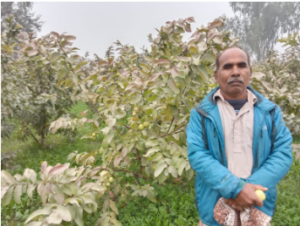
We found Mr Gill’s garden is the best as plants are healthy, managed properly and bearing a lot of fruit. He told us this is the first fruit of his garden. We are really very happy and satisfied with the farmer’s hard work and success story. Regarding his future planning, he shared with us in future he will sow vegetables in the garden as inter cropping. At present he is sowing a fodder crop for his cows.
In 2021, Global Landcare gave some funds for food security to the Network of Organisations for Agricultural Development (NOAD), also in Pakistan. 20 small scale farmers were able to plant vegetable and kitchen gardens. All the farmers did well and cultivated the vegetables at their own farm or in their homes.
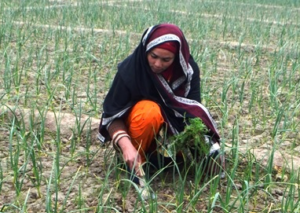 Nazia, a woman farmer, performed very well growing vegetables as her household food security, especially with her garlic crop. She is using her vegetables in her kitchen and selling surplus vegetables in her own village and sometimes in the surrounding villages. She is earning a lot of income from her vegetable garden: with the savings she purchased two small goats for further family income generation and uses the family savings for her children’s education.
Nazia, a woman farmer, performed very well growing vegetables as her household food security, especially with her garlic crop. She is using her vegetables in her kitchen and selling surplus vegetables in her own village and sometimes in the surrounding villages. She is earning a lot of income from her vegetable garden: with the savings she purchased two small goats for further family income generation and uses the family savings for her children’s education.
Natural Environment Tree plantation
GL Board member Mubarak Yaqub from Pakistan Landcare shared the following stories with us.
Pakistan is a poor Forest country. It’s comprising of about 2.2 % Forest Land area. And it is decreasing day by day by cutting and not planting with the same ratio. There is no Forest Ministry at Federal level so there is no regular forest development policy in the country. There is air pollution, smog, less rains, high temperature in long summer and Carbon emissions etc in the country. People are not healthy and happy.
Keeping in view the facts and figures, Landcare Pakistan started tree plantation with kind collaboration with Forest Departments, schools, women groups, small Agriculture NGOs Network. Different plant species are planted including fruit plants, timber/woody and shady plants and even medicinal plants. This initiative was taken in Spring tree plantation 2024. We planted about 9000 plants Which are growing successfully. People are happy and enjoying by rearing properly.
 In September again we will plant in large scale including more People and farmers. At Farmers Field we are doing Agroforestry and Mass plantation. It will be economic activity for them.
In September again we will plant in large scale including more People and farmers. At Farmers Field we are doing Agroforestry and Mass plantation. It will be economic activity for them.
People will get timber wood, Food and fodder and medicinal use. There will be healthy environment and green atmosphere. We are connecting other areas and farmers who are really interested and committed. This program will continue for ever.
Seeing is believing’ – Fiji Landcare study tour to the Philippines
GL Board member Clinton Muller is a key participant in this project is his capacity with RMIT.
‘Seeing is believing’ was a proverb frequently expressed by the Fiji Landcare project team during a study tour of the Philippines in December 2023, the second cross country exchange between the countries as part of an ACIAR funded project, building on a tour of the Philippines to Fiji in April 2023.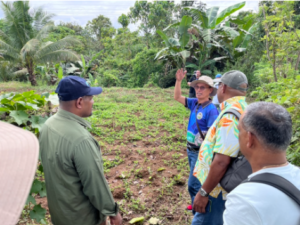
The study exchange tour, as part of the ACIAR funded Fiji Landcare project, included a delegation of 15 core partners in the project traveling to the the Philippines. Delegates as part of the tour included representatives from Fiji National University, Ministry of Agriculture, Tei Tei Taveuni, Fijian farmers participating in the project, in addition to the Australian researchers from RMIT University.
The Study Tour was a key activity of the project and provided an opportunity to deliver of the key objectives of:
• Exchange ideas, knowledge, skills
• Facilitate linkages between Philippine, Fiji and Australian research, education, extension and farmer networks
• Explore potential research activities, co-authorship and project publications
• Enable social interaction and joint learning
• Be curious – ask questions
• Enjoy the time together.
The study tour commenced with a meeting at the Australian embassy in Manila which included the ACIAR Philippine Country team and the Australian Embassy First Secretary (Economic). Following the discussion with ACIAR, the delegation traveled to Los Banos to visit the Department of Science and Technology – Philippine Council for Agriculture, Aquatic and Natural Resources Research and Development (DOST-PCAARRD). Discussions with DOST-PCAARRD commenced after a formal welcome and included a tour of PCAARRD’s facilities including an impressive showcase of projects and innovations and the eLibrary. 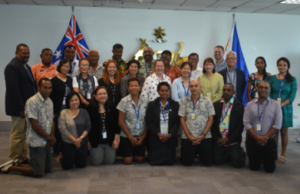
Day two of the tour commenced with a visit to the University of the Philippines Los Banos (UPLB). The delegates were welcomed by the Chancellor and Vice Chancellor for Academic Affairs. The discussion explored mutual interest topics including food and water security, agrifood system approaches, research and education opportunities, national capacity strengthening initiatives such as Sri Lanka and Cambodia and the possibility of Graduate Programs that could be offered to Fiji through student exchange, co-design learning objectives, mentoring and other capacity strengthening activities. The day concluded with a site visit to Silan Agri Farm in Cavite, hosted by DOST-PCAARRD. The Silan Agri Farm is a 12 hectare commercial dragon fruit farm that hosts the SciCAT project. DOST-PCAARRD funded the SciCAT project, which is implemented by Cavite State University and Silan Agri Farm, and aims to provide opportunities for imparting science-based technologies through farm development and technology application in a sustainable way.
The study tour delegates proceed to travel to the island of Bohol, where they met with the Local Government Unit municipality of Pilar in central Bohol. The tour group were greeted by local government officials and 196 Barangay Farmer Technicians (BAFTechs). An overview of the Productivity Improvement through Landcare and Agricultural Resources Development and Management (PILAR DAM) program was provided, with the group proceeding to site visits of a smallholder community garden and a house-hold kitchen garden. Delegates mingled with the farmers, extension officers and researchers and inspected vegetable and fruit tree sites and a fish pond where Tilapia were being caught and cooked for the delegates to share with the community members. The day concluded with the delegation enjoying key tourist highlights on Bohol, including the Chocolate Hills and the Tarsier Conservation Centre.
The final day of the program, included a final field visit to the Municipality of Jagna. The delegation was warmly received and provided with a briefing of the history and initiatives of Landcare activities, followed by a highly engaged Q&A session. Field visits were undertaken to a community coordinated waste and resource recovery centre, followed by a meeting of farmer groups on the slopes of Mt Matunog. The day concluded with a reflections discussion amongst participants on their impressions from the study tour, shared lessons and actions to implement on return, including a desire for future collaboration that was captured in a Future Considerations concept paper.
Western Australia Landcare Tour
GL Board member Kaz Kagohashi and his wife Saori visited the revegetation sites at Ardross Primary School and Blackwall Reach Reserve, where West Australian Landcare Network deputy chair Bruce Ivers and his collaborators (science educators) have worked. It was fascinating as they prepared the revegetation projects for the science education program. Young generations can develop their logical thinking ability and deepen their understanding of and connection with nature.
 On Day 1, West Australian Landcare Network deputy chair Bruce Ivers showed us their ongoing projects. We visited revegetation sites planted by the local students from Ardross Primary School and Santa Maria College, collaborating with the science educators. Bruce’s projects were exciting as young generations have been involved in Landcare and nurtured their scientific thinking. He provides all the scientific data acquired through the revegetation process (e.g., germination rate, water usage, fertilisers, pesticides, costs, etc.). It enables teachers and students to analyse the cost-effectiveness of planting native trees and discuss how to increase the germination rate. Landcare is opening various opportunities for students: it enables them to learn about native species, deepen their understanding of how ecosystems work, develop their competence in logical thinking and connect themselves with nature.
On Day 1, West Australian Landcare Network deputy chair Bruce Ivers showed us their ongoing projects. We visited revegetation sites planted by the local students from Ardross Primary School and Santa Maria College, collaborating with the science educators. Bruce’s projects were exciting as young generations have been involved in Landcare and nurtured their scientific thinking. He provides all the scientific data acquired through the revegetation process (e.g., germination rate, water usage, fertilisers, pesticides, costs, etc.). It enables teachers and students to analyse the cost-effectiveness of planting native trees and discuss how to increase the germination rate. Landcare is opening various opportunities for students: it enables them to learn about native species, deepen their understanding of how ecosystems work, develop their competence in logical thinking and connect themselves with nature.
 On Day 2, Saori, Kaz and Francis visited two project sites. One was a State Regional Park (Lesmurdie Brook) where the Friends of Upper Lesmurdie Falls have engaged in weeding, revegetation and erosion control through the collaboration with various bodies, including Western Australia Landcare Network. The other was in Jorgensen Park, where the Friends of Jorgensen Park has revegetated the reserve in partnership with the City of Kalamunda.
On Day 2, Saori, Kaz and Francis visited two project sites. One was a State Regional Park (Lesmurdie Brook) where the Friends of Upper Lesmurdie Falls have engaged in weeding, revegetation and erosion control through the collaboration with various bodies, including Western Australia Landcare Network. The other was in Jorgensen Park, where the Friends of Jorgensen Park has revegetated the reserve in partnership with the City of Kalamunda.
Note: This tour was organised by Francis Smit, a member of Global Landcare.
Mekong Organics
GL Board is Vice Chair Rob Youl and Chair of the ALI Fund which recently allocated $2000 to Mekong Organics (MO) to help run training in vegetable-growing in Bin Phuoc province, 130 km north of Ho Chi Minh City, in January 2024. Two of the organisers are Australian: Dr Van Kien Nguyen, Director, Mekong Organics and Alan Broughton of Bairnsdale.
Kien came here in 2005 for postgraduate study that led to a PhD and subsequent research on sustainable rice farming. He lives in the ACT. Professionally, Alan was a research worker on grazing and TAFE teacher in organic agriculture. Now retired, he has been very active in the Organic Agriculture Association (OAA) since 1985. Kien maintains a wide network of farmers, instructors, enterprises and research workers across Asia, North America and Europe, and Alan has been involved in several training programs of this nature.
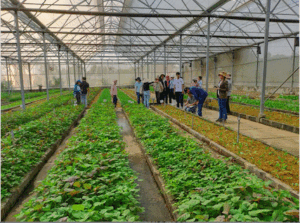
MO focuses on the southern regions of Vietnam, and is involved with research, education, certification, nutrition, health and many aspects of marketing and consumption. Dr Nguyen is also working to expand OA’s activities into neighbouring Cambodia and Laos. Why organic? Alan Broughton explains: Human health is a priority. Our bodies are exposed to hundreds of chemicals unknown to previous generations.
Whilst chemical companies claim their products are thoroughly tested for adverse health effects, there is too little research on their effects on children, including the unborn. Nor are they sufficiently tested in combination with other chemicals, nor is damage caused by minute quantities sufficiently charted – some chemicals have greater impact in parts per billion than parts per million, because at higher levels the body can sometimes reject them. Testing scientists are rarely independent. Chemicals are not always used according to directions.
A strong correlation exists between increased chemical usage and higher incidence of the modern illnesses of autism, asthma, diabetes, depression, infertility and schizophrenia. Finally, the environment is suffering via many unintended side effects. Non-target insects that pollinate crops and help control pests are impacted. Loss of bird populations is a worldwide problem. Contaminated waterways kill frogs and fish. Much of the world’s drinking water is severely contaminated by nitrate fertilisers and pesticides. 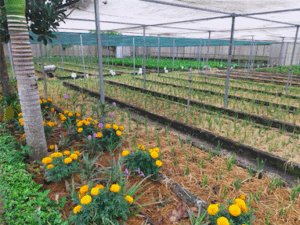
Chemical usage is also unsustainable economically. Pesticides do not solve pest, disease and weed problems. They often make them worse. Nor has crop loss decreased. The world spent $850 million on pesticides in 1960, rising to $39 billion in 2007 – with no reduction in pests and disease. Pesticides can increase pest attack by reducing the ability of a plant to repel attacks, and by killing off natural controllers. Pests, diseases and weeds develop resistance to the chemicals designed to control them, a process of natural selection. If several individual organisms survive a pesticide, their genetic advantage is passed on to the next generation, so that within a few years the pesticide loses much of its impact. New chemicals with different modes of action are continually developed by the chemical companies, now fast running out of new options.
As soluble nitrate fertiliser usage increases, the damage to soil biology and soil structure also increases, so that more nitrate is necessary to obtain the same yield. Nitrates also weaken plant cell walls, leading to easier attack by pests and diseases. Chemical fertilisers are major contributors to atmospheric greenhouse gases. Less than half the nitrates applied to fields are used by crops. The remainder either leaches downward into the water table, washes off into waterways, or volatises into the air as nitrous oxide. Manufactured forms of nitrate and phosphate fertilisers negatively affect soil biology, particularly the mycorrhizal fungi that are the main creators of stable carbon in soil. Nitrate fertilisers stimulate certain bacteria which, because they need a carbon source, start decomposing normally very resistant forms of soil carbon, turning it into carbon dioxide. Chemicals keep farmers poor. The only long-term beneficiaries of agricultural chemicals are the chemical companies.
Organic farmers do not need chemical inputs. Soil fertility is maintained by recycling crop and animal residues, and by the soil microbes that release locked-up minerals from the soil. Pests are controlled by natural predators, which are encouraged by crop biodiversity. Adding nectar- and pollen-producing flowering plants to the farm ecosystem allows the beneficial insects to complete their lifecycle. Root diseases are prevented by active populations of disease-controlling organisms in the soil. Foliar diseases are controlled by the plant health and vigour that a chemical-free balanced soil produces. Weeds are managed by tools and ground cover. Organic farming requires greater knowledge and understanding and experimentation to design farming systems that produce good crops with minimal inputs. It is not as easy as chemical farming, but more rewarding. The millions of organic farmers are happier farmers, knowing that they are producing nutritious uncontaminated food.
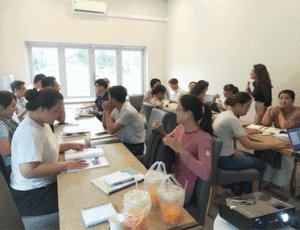 Alan is adamant that organic farming with a sound scientific ecological base is the way of the future. Chemical farming is not sustainable. If the true costs to health and the environment were included in food production economics, only organic food would be affordable. The recent training course in Vietnam ran from 8 – 11 January 2024. It covered principles and certification, making organic fertilisers, the keys to pest and disease management – including weeds and nematodes, self-prepared pesticides, integration with tree crops and grazing, fieldwork and finally, handling, packaging, marketing and traceability.
Alan is adamant that organic farming with a sound scientific ecological base is the way of the future. Chemical farming is not sustainable. If the true costs to health and the environment were included in food production economics, only organic food would be affordable. The recent training course in Vietnam ran from 8 – 11 January 2024. It covered principles and certification, making organic fertilisers, the keys to pest and disease management – including weeds and nematodes, self-prepared pesticides, integration with tree crops and grazing, fieldwork and finally, handling, packaging, marketing and traceability.
Subsequently a group of Vietnamese horticultural specialists visited south-eastern Australia late in March for one week. Led by Kien and Alan, with an interpreter in support, the 19 members talked to Australian importers in Sydney, then in Canberra met DFAT staff and visited a community garden. Back on the road, in the Riverina they visited a chocolate factory, an olive grove, rice farms and an organic vineyard. Crossing the border and the Divide to Gippsland they attended a public meeting at Sarsfield where they met the local community. Then the group moved to Yarragon to an organic apple orchard and a dairy farm, followed by a day in Melbourne at the Australia-Vietnam Trade and Investment Promotion Centre, located in Brooklyn. Rob Youl greatly enjoyed dinner with the group, a lively, happy mix of young and old and men and women, before it left for Tullamarine and home. They warmly expressed their enjoyment of the tour, gratitude to Kien and Alan, and the many opportunities to share information on organic farming.
For more information, see https://mekongorganics.com/about/our-organisation/
Grayson LandCare (Virginia, USA), is a member-driven non-profit, celebrating life in a rural, agricultural community.
LandCare promotes economic self-reliance, preserves local traditions, and helps landowners to protect and enhance our natural heritage by starting conversations, problem-solving, and appreciating the value of the place we call home.
Food security is a worry everywhere. It is easy to assume that in some countries where things always seem to be freely flowing, there are nevertheless people who do not have food security. In Grayson, the Landcare group work hard to support a group called “Food Independence’.
In 2023, the Grayson group sourced over 155,000 pounds of food. They get donated or “low-retail” food and wholesale produce from a Farmers Market, bulk purchase of sale items from Food City, and local food donations. Their incredible volunteers unload, unpack, repack, and distribute all that food. We want to stay a year ahead of need since we believe dependable and consistent food assistance is essential for the food insecure.
In addition to collecting money, the Landcare group works hard educating their community to grow their own – they will continue to work the School garden with 4th grade children ensuring that they have the opportunity to harvest the plants they start and nurture next year as 5th graders. The goals of the garden project are to present core scientific principals using hands on learning while teaching the kids basic gardening skills, letting them enjoy the rewards of their own labor in the form of tasty fresh vegetables and give them another reason to go outside.
Landcare Europe is continuing to travel around their region.
They publish extensive reports of their work at https://www.landcare-europe.org/events
See https://www.landcare-europe.org/fileadmin/user_upload/Ressources/Factsheets/Poster_LE_EN_web.pdf for information about Landcare Europe.
The net big event was a workshop in Croatia 11-12 June 2024. This workshop will be on extensive grasslands as natural carbon sinks and requirements for CAP measures. The 2013 CAP reform introduced a payment for a compulsory set of ‘greening measures’, accounting for 30% of the direct payments budget. These measures are intended to enable the CAP to be more effective in delivering its environmental and climate objectives and to ensure the long-term sustainability of EU agriculture.
The 2013 CAP reform introduced a payment for a compulsory set of ‘greening measures’, accounting for 30% of the direct payments budget. These measures are intended to enable the CAP to be more effective in delivering its environmental and climate objectives and to ensure the long-term sustainability of EU agriculture.
The greening measures comprise:
• Crop diversification – the cultivation of a minimum of two or three crops on arable land above certain size limits (to improve soil quality primarily);
• Maintenance of permanent grassland – to limit declines in the ratio of permanent grassland to total agricultural area to less than 5%, as well as to designate the most environmentally sensitive permanent grasslands (ESPG) and protect them from ploughing (to support carbon sequestration, support species and habitats of biodiversity value, protect against soil erosion and protect soil quality); and
• Ecological Focus Areas (EFA) – to manage at least 5% of the arable land of farms with more than 15 hectares of arable land as an EFA, comprising a combination of management practices or landscape features as set out in the regulation and applied by Member States (to safeguard and improve biodiversity on farms primarily). Image from Landcare Europe brochure
Cape Sanctuary – a story
by Ewan McGregor (former regional co-ordinator for NZLT) from New Zealand.
New Zealand is a unique country. Primarily, this is due to its isolation, sitting down here alone in the South Pacific. Recently a cabinet minister quipped that if we launched a rocket attack from our launching site, based on a small island at the northern tip of Hawke Bay on the North Island’s east coast, the country so attacked would have no idea from whence it came! My story here is also one fundamental to our isolation, but it’s our war on protecting our unique ecology. It is about one especially aspiring and major initiative, the Cape Sanctuary, based in this case, at the southern tip of Hawke Bay, given by Cook the enduring name of Cape Kidnappers. (Note: Cook named the bay Hawke’s Bay, but not the land. Upon European settlement the region took the name, and for distinction the bay had the ‘s’ dropped off.)
But first; what’s the problem? Indeed, it is a problem, and a big one. Because of our isolation New Zealand developed an absolutely unique ecology. We broke free from the great southern continent of Gondwana, beginning, it is believed, 80 million years ago. This was before the evolvement of mammals, so this land was mammal free, a couple of small bats apart, which, we can assume, flew across widening the gap. This’s as it was until the arrival of the Māori just a millennium ago. This compares with Australia where the Aborigine arrived maybe 60,000 years ago. Accordingly, our fauna, had no predators, and our flora no mammalian browsers. Many of our birds, then, were poor flyers, if they could fly at all, and were slow breeders, and our plants lacked thorns or unsavory taste.
The Māori’s main effect on our ecology was that of fire as they brought just a minuscule range of plants and animals, but the real revolution began with the arrival of Europeans in the mid-1800s. Apart from our uplifted mountain lands, which cover much of the country, by the First World War the New Zealand landscape had been changed profoundly and irrevocably. Most of our magnificent lowland bush had been forsaken to make way from pasture to be stocked with sheep and cattle, and even out mountain forests were being weakened, if not destroyed, by the explosion of deer and, later, possums. Alongside this was the devastation of our birdlife through predation by cats, mustelids and wild dogs and pigs, along with habitat loss. Some birds, such as the unique huia, had become extent, and the Māori had long hunted the mighty moa to extinction, and others, while others, like our very symbol, the kiwi, were in critical decline.
This was a situation that began to alarm the wider public of this country over the final quarter of the last century, though, of course, we had our environmental visionaries long before that, and dedicated efforts, both publicly and privately driven, began to take form. It is one of outstanding note that is the subject here. Cape Sanctuary is by far the largest privately owned. Initiated and funded in the country, the result of the commitment and generosity of the two landowners, one local – business man Andy Lowe and his wife Liz, and one from New York billionaire and philanthropist, the late Julian Robertson and his (also late) wife, Josephine. It must be emphasised that they are quick to pay tribute to the army of volunteers who put in the hard yards.
The sanctuary is triangular-shaped, with one side being precipitous cliffs facing Hawke Bay to the north, one side largely of coastal sand dunes facing the Pacific Ocean, and the third bordered by a 10.6-kilometer predator-proof fence, (costing $million a kilometer), completed in 2006. The sanctuary, though, is not just about ecological protection, that is the emphasis here, for it also embraces a working farm, this owned by Lowe, and a world-class golf course, along with tourist facilities to match, owned by Robertson. (The Cape Kidnappers Golf Course was completed in 2004 and is as of the world’s top courses.)
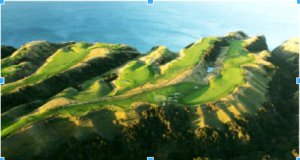 Cape Kidnappers has always been known for its gannet colony, covering the geologically dramatic tip of the peninsular. For years this was regarded as the only mainland sanctuary anywhere, but efforts to establish others have proved successful. It was noted by Captain James Cook in 1769 as he sailed past, and has long been a popular tourist attraction. Now it is just part of the wider sanctuary, but vital one.
Cape Kidnappers has always been known for its gannet colony, covering the geologically dramatic tip of the peninsular. For years this was regarded as the only mainland sanctuary anywhere, but efforts to establish others have proved successful. It was noted by Captain James Cook in 1769 as he sailed past, and has long been a popular tourist attraction. Now it is just part of the wider sanctuary, but vital one.
Two endeavours of the sanctuary’s development are predator knockdown and habitat restoration. Predator control has been a mighty effort from the start when extensive trap lines were laid along with poison drops. Main targets have been mustelids – stoats, ferrets and weasels – and wild cats, and possums, which destroy our palatable vegetation, but also predate on chicks and eggs. Rabbits, though more a pastoral pest, have been destroyed in great numbers. With an area of this size, it would be unrealistic to eliminate totally unwanted animals, (though hedgehogs have been eliminated) but, in any case, the ends of the fence do not extend into the sea, so animals are able to enter by going around the end, a bit like the panzers skirting the Maginot line of 1940. Here though, the pests are met with a minefield of traps. In total more than 1,400 traps have been set and 2200 bait stations laid behind the fence, and monitored by two full-time staff and multiple volunteers.
The site of the golf course is characterised by generally flat land intersected with a succession of deep ravines. Over the time of farming going back to the 1850s, stock had access through these areas, inhibiting regeneration. These, (alone with the golf course, naturally), are now stock excluded, and, after all these years, these gullies are regenerating. But there is much other land able that has been subject to continual grazing, or which is now in radiata pine plantation that is now being regenerated, or will be following logging. This is being enhanced by substantial native species planting. Stock for this is being grown in an on-site native plant nursery that would do justice to any commercial operation.
So today, the Sanctuary is home to more than 100 Little Spotted and Brown kiwi, along with rare or threatened species like the tuatara, takahe, weka, tomtit, whitehead, rifleman, robin, and a number of sea birds, including the blue penguin, most of which have not been seen in this region for many decades. Given the extent of the coastal boundary emphasis has been placed on sea birds through physical introductions or through enticement, including the broadcasting of the species call.
The Kiwi, our country’s very symbol – and our individual moniker – is an extraordinary bird. It is flightless, nocturnal and rare. Indeed, a few decades ago it was in danger of extinction. Accordingly, few Kiwis – that’s us – had ever heard its distinctive call, let along, seen one in the wild. That has changed, thanks to breeding programs in semi-natural but predator-controlled areas like this to the point where numbers are being reintroduced to the wild. 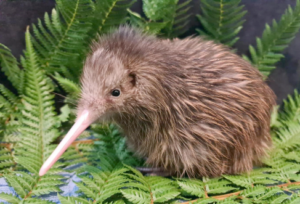
The kiwi hen lays usually just one egg annually, and no bird lays as big an egg in relation to the hen’s bodyweight as does the Kiwi. This is such an effort that the long incubation of 75-90 days is left to the male. Extraordinarily, 65% of the egg is yoke, this allowing the chick to fully develop, with feathers, upon hatching. Thereupon the male, in an act of self-satisfaction, abandons it, so within 24 hours the chick is on its own. One can imagine its vulnerability when predators were introduced by Europeans. This increase in the number of the kiwi, along with other struggling indigenous species has been made possible by an enormous commitment to predator knockdown. Keeping numbers low will, assumably, be perpetual.
Two endangered species mentioned above are breeding successfully at Cape Sanctuary. The takahe, a colourful bird, was assumed to be extinct until rediscovered in a remote part of Fiordland in 1948. Another is the ancient reptile, the tuatara, endemic to New Zealand and the last survivor of an order of reptiles from the age of the dinosaurs.
Cape Sanctuary, the result of two families’ commitment, along with an army of volunteers, is a national treasure, if not an international one. It is a priceless gift to generations yet unborn.
